#Jean d'Orleans
Photo


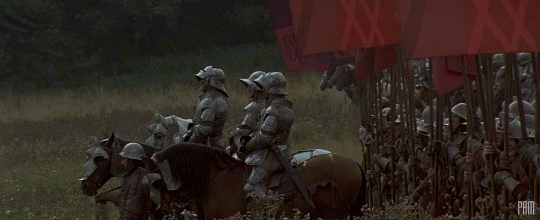

The Messenger: The Story Of Joan Of Arc (1999)
#1999#gif#film#movie#history#The Messenger#The Story Of Joan Of Arc#Luc Besson#Tcheky Karyo#Jean de Dunois#Jean d'Orleans#Milla Jovovich#Joan Of Arc#Jeanne d'Arc#Vincent Cassel#Gilles de Rais#Andrew Birkin#John Talbot#Vincent Regan#Buck#Hundred Years' War#Orleans#France#England#knights
30 notes
·
View notes
Text

Jean de Dunois or Jean d'Orléans, Count of Dunois, known as the "Bastard of Orleans" (1403-1468), was a French nobleman and officer, known as one of the great military leaders of the Hundred Years' War, and particularly as a comrade-in-arms of Joan of Arc during the raising of the siege of Orleans (1429).
#royaume de france#maison de valois#maison d'orleans#full length portrait#jean d'orleans#comte de dunois#full-length portrait#hundred years' war#la guerre de cent ans#orléans longueville
6 notes
·
View notes
Photo

Jean-Marc Nattier (French, 1685-1766)
Portrait dit de Louise-Henriette de Bourbon-Conti, duchesse d'Orléans, en Hébé, Detail, 1732
#jean marc nattier#art#public domain#french#france#real image without over-exposure#european art#western civilization#louise hentiette de bournon conti#duchesse d'orleans#hebe#greek mythology#mediterranean#european#brunette#female portrait#dark eyes#18th century
28 notes
·
View notes
Text
JACOBIN FICTION CONVENTION MEETING 28: THE GLASS-BLOWERS (1963)
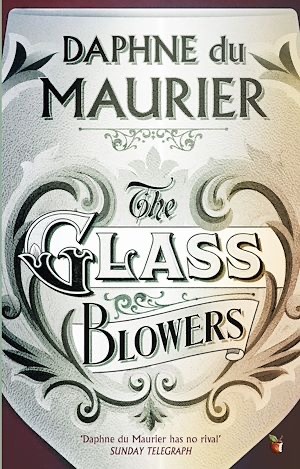
1. The Introduction
Hi, Citizens! Welcome back to the Jacobin Fiction Convention!
So, today’s the day we review yet another media piece! Will it be a hidden gem? A shitty Thermidorian-sponsored pile of lies? One of those modern perceptions of Frev that paint the warmongering rats called Girondins as the innocent moderates again? Let’s find out!
(I swear, the Girondins may haunt me after this… but I don’t give a fuck!)
Anyway, I usually don’t trust authors who are anglophone. Not on the topic of Frev, at least, as our community has been burnt on that front far too many times.
However, what interested me about Daphne du Maurier’s novel is the fact that it’s based on the story of her ancestors, the titular glass-blowers from France, so she definitely had much more accurate material to work with than most authors do.
Also the foreword throws a ton of shade at The Scarlet Pimpernel (which is a pleasant bonus in my book) and promises readers a private story - the tale of one specific family - instead of same old, same old sensationalist Frev stuff usually shown in media. So, naturally, I was interested to see if this would be the one time an Anglophone book wouldn’t spout propaganda.
In order to find that out, let’s begin!
P. S. The book is available online in PDF and EPUB formats so it shouldn’t be hard to find the entire thing.
P. P. S. This review is dedicated to @fireortheflood and @edgysaintjust
2. The Summary
The summary comes from Goodreads:
“The world of the glass-blowers has its own traditions, it's own language - and its own rules. 'If you marry into glass' Pierre Labbe warns his daughter, 'you will say goodbye to everything familiar, and enter a closed world'. But crashing into this world comes the violence and terror of the French Revolution, against which the family struggles to survive.
Years later, Sophie Duval reveals to her long-lost nephew the tragic story of a family of master craftsmen in eighteenth-century France. Drawing on her own family's tale of tradition and sorrow, Daphne du Maurier weaves an unforgettable saga of beauty, war, and family.”
Okay, the summary is coming off as having a bit of propaganda, but genuine atrocities did happen during Frev too so let’s not jump to conclusions just yet and unpack this.
3. The Story
First of all, I loved the framing device of one family member (Sophie Duval) writing a letter to another (Louis-Mathurin Busson, her nephew) to help the latter uncover important truth.
I will get into why Sophie is doing that in the “Characters” section, but I like this “excuse” for telling us this story, as it really feels like the reader is let in on the secret along with the character of the nephew.
Also, I like the fact that the primary focus is on the Busson family and multiple prospectives within it, as this makes the reader more attached to everything that’s going on. Honestly, reminds me of “One Nation, One King”, a movie in which ordinary people are the main characters, not historical figures. Also this approach is refreshing!
The pacing is generally pretty good, and, while at first I felt like Sophie’s decision to start with the story of her parents was a bit unnecessary, it proved to be the opposite. See, that backstory actually sets up a lot of things that will happen later on and, again, make for a more personal story where the reader is actually invested in the lives of the characters, their trade (glass making), etc.
However, be warned that some time skips can be a bit confusing and the pace is not fast, which definitely isn’t for everyone. Also the story isn’t exactly linear - no big goals or high stakes to drive the narrative here, so it’s probably not a book for you if you prefer something more linear and goal-oriented with high stakes.
Finally, I love the touch of pointing out that certain events in the family happen right before/right after the important historical stuff. Only serves to make Frev more personal in the long run, which is nice!
And, while the narrative doesn’t idealize Frev, we’re meant to see it as a good thing, with Royalists and Girondins being the bad guys (yay) and here’s the excerpt that brought me joy specifically because it doesn’t sugarcoat Girondins (they don’t deserve it):

So yeah, when it comes to the story, I haven’t seen any major issues. Moving on.
4. The Characters
(Spoiler alert!)
To be honest, I found Sophie Duval a bit bland at first, but her character grew on me later on. She is initially against Frev and thinks it’s just radical fanaticism because she sees riots personally and fears for her family, but later becomes disillusioned by the old laws and embraces the Revolution.
Of course, with the Revolution come atrocities as well, so she doesn’t view it through rose-tinted glasses in hindsight, but she doesn’t really buy into most of the propaganda. There is a tidbit of Law of 22 Prarial where she thinks that this is going too far, but this is not an unreasonable fear, more like fear of the side effects of this law and not being able to know the full context anyway, since she lives in a more rural area, away from Paris.
In the end, Sophie just looks out for her family and her views change throughout the story. Very realistic, and I love it.
I also love her siblings, two of whom are revolutionaries, and I love the fact that one of the revolutionary siblings is female (her name is Edmé). See, revolutionary women should get more credit and representation, so I’m ecstatic that we got a republican action girl who participates in riots and even kills a Vendean rebel!
She isn’t afraid to take action. Love it!
Pierre, yet another one of Sophie’s siblings, is a secondary character but I love the fact that he does his best to help the poor as a lawyer and also actively tries to change things.
The only one out of the Busson siblings whom I hated is the oldest, Robert. Basically, since he was born when his parents were pretty wealthy (running a glass-house) and his mom was on good terms with the owner of the business (a marquise), Robert naturally visited the château of this marquise a lot as a child because that was his mother’s friend.
Unfortunately, this environment made him dream of high society and become too ambitious and irresponsible for his own good. He bankrupts himself multiple times and one bankruptcy results in the sale of the glass-house where his father was apprenticed, yet Robert doesn’t give a fuck.
He generally doesn’t give a fuck about anyone except himself or the consequences of his actions, to the point that he abandons his kids! Twice!
First time, he loses his first wife and does raise his son for a bit, then Frev comes and he sides with Duke of Orléans. Then he realizes that France isn’t going to be a monarchy and flees with émigrés to London, abandoning his son completely and dumping him onto Madame Busson like a sack of potatoes! Oh, and before leaving he remarries without telling anyone.
Second time, Robert completely deceives his second wife, pretending to be an impoverished aristocrat who was never married and never had kids, knowing she will believe it because she is a young and naïve orphan. Then they flee to London, have a bunch of kids (he never remembers his first son), Robert finds out that French émigrés aren’t welcome and he can’t make it big and be in high society like he hoped. So what does he do? Correct, he fakes his death and returns to France, abandoning his second family too!
Sorry for the rant, Citizens, it’s just that Robert made my blood boil. What a charming fucking guy… It’s really no wonder that, after his return, his first son wants nothing to do with him.
By the way, the nephew to whom Sophie is writing about her family is one of the children Robert had with his second wife, so he grew up believing the lies that his father was an aristocrat whose château was burned down by revolutionaries, so the reason for this letter is Sophie telling him the truth, as she rightfully believes that it’s her duty and that her nephew should know said truth.
I also liked Magdaleine Busson, Sophie’s mother. She is a caring, strict and wise woman who looked after ledgers and workers at the glass-house where her husband was managing things. She takes no bullshit from Robert at all and is absolutely furious the bastard left behind his son. Okay, actually she takes no bullshit from anyone, which is pretty cool.
As for historical figures, most of them are merely namedropped. Duke of Orléans makes a cameo, but others are mentioned in passing (like Marat, Robespierre and Napoleon). Also we have more obscure people being mentioned, like General Kléber or Pierre Choderlos de Laclos (if you know Dangerous Liasons, that should ring a bell). But that’s about it, and I’m okay with it because it’s not a story about them.
5. The Setting
Du Maurier really has a way of bringing the story to life with just the right amount of description and action balanced out. Love her approach to that.
6. The Writing
There is some outdated vocabulary used, but most of the time it’s really easy to understand for those who’re fluent in English and French words have just enough context clues for the audience to figure out what they mean.
The style also doesn’t dive into annoying habits like absurdly long descriptions, which is a big relief after that awful Madame Tussaud book.
Also it’s one of the few times I’ve seen where the first person point of view avoids the trap of the main character becoming the author’s surrogate in the universe or a self-insert.
7. The Conclusion
I’m pleasantly surprised to report that there’s very little (if any) lies here. All in all, this is an excellent read that takes a dive into family history of the author and the events unfolding before the eyes of the characters.
It has well-written characters, a compelling story to tell its audience, a first person POV done right and, for a change, a narrative that focuses on regular people.
I definitely recommend this novel (but trigger warning for child death, still births, death, blood, pregnancy and an ableist word towards the end). If you feel like reading a story offering lower stakes and more personal conflicts, then this is a novel for you.
But, with that out of the way, we must conclude today’s meeting. Stay tuned for future updates and reviews!
Love,
- Citizen Green Pixel
#frev#french revolution#frev art#frev media#jacobin fiction convention#daphne du maurier#the glass blowers#robespierre#marat#duc d'orleans#pierre choderlos de laclos#napoleon bonaparte#jean baptiste kleber#literature review
21 notes
·
View notes
Text

Philippe II d'Orleans, Regent of France and Madame de Parabere as Minerva by Jean-Baptiste Santerre, 1716.
#classic art#painting#jean baptiste santerre#french artist#18th century#portrait#couples portrait#outdoor portrait#armor#house of orleans
42 notes
·
View notes
Text
Talk to me if you are interested in:
Napoleon and Napoleon II
Rousseau
Charles II of England and his sons
Louis XIII/XVI/XV/XVI (yesss ALL of them)
Philippe I Duc d'Orleans
Marquis de Sade
Peter the Great
Louis Ferdinand, Dauphin
Lord Byron
Literally any of the castrati though my fav are Farinelli, Caffarelli, Matteuccio, Pacchierotti, Tenducci and Guadagni
Casanova (his memoirs are awesome)
John Wilmot (the naughtiest Earl of Rochester)
The Rhine princes (Charles Louis, Rupert, Edward, Maurice)
Louis Auguste (duke of Maine)
Henry Benedict Stuart
Henry Stuart, Duke of Gloucester
Louis Jean Marie de Bourbon, duc de Penthièvre
Charles Townshend, 2nd Viscount Townshend
François Louis, Prince of Conti
Louis Henri of Bourbon
Philippe, Duke of Vendôme
Louis, Duke of Orléans
Philippe, Chevalier de Lorraine
Carlo II Gonzaga Nevers
And thus concludes my subject-to-alteration list of dead men I'd like to discuss. Have a nice day/night! 🌈
#napoleon#rousseau#marquis de sade#louis xvi#louis xv#junot#louis xiv#philippe i duc d'orleans#louis xiii#christian vii#lord byron#peter the great#napoleon ii#Farinelli#Castrati#caffarelli#Pacchierotti#Guadagni#tenducci#casanova#giacomo casanova#charles ii of england#charles ii#matteuccio#john wilmot
15 notes
·
View notes
Text
Day 7: Charlotte of Savoy
Charlotte of Savoy
Born: c. 1441/3
Died: 1 December 1483
Parents: Louis, Duke of Savoy and Anne of Cyprus
Queen of France
Children: Louis (18 October 1458 – 1460)
Joachim (15 July 1459 – 29 November 1459)
Louise (born and died in 1460)
Anne (3 April 1461 − 14 November 1522) - the wife of Peter II, Duke of Bourbon
Joan (23 April 1464 – 4 February 1505) - the wife of Louis XII, King of France
Louis (born and died on 4 December 1466)
Charles VIII of France (30 June 1470 – 8 April 1498)
Francis, Duke of Berry (3 September 1472 – November 1473)
Charlotte of Savoy was one of the 19 children of Louis, Duke of Savoy and Anne of Cyprus.
On 11 March 1443, the one year old Charlotte was betrothed to Frederick of Saxony, son of Frederick II, Elector of Saxony, but the arrangement was annulled for unknown reasons.
Almost 8 years later, on 14 February 1451, Charlotte married Louis, Dauphin of France,eldest son of Charles VII of France and Marie of Anjou.
Charlotte was 9 years old and Louis was 27.
Louis' previous wife died childless in 1445.
The marriage took place without the King of France’s consent.
Upon the wedding, Charlotte became Dauphine of France.
When Louis received news of his succession to the throne of France, he abandoned Charlotte at the Burgundian court.
On 22 July 1461 Charlotte became the Queen of France.
Soon she became ill and was close to death by August 1462. She recovered but despite that her health remained weakened.
Louis XI kept his wife away from court at the Château of Amboise along with her household.
Charlotte mostly spent her days with her sisters and courtiers, playing chess, marbles, doing needlework, praying, doing her religious duties and supervising her daughters' education.
On very few occasions, she was asked to perform her ceremonial duties as queen such as greeting foreign dignitaries.
Charlotte served as regent of France in September 1465.
Louis died on 30 August 1483 and was succeeded by their son Charles VIII.
He did not appoint a regent instead left instructions for a royal council to govern during the minority of Charles. Charlotte, Duke Jean de Bourbon II and their two sons-in-law Louis d'Orleans (married to their daughter Jeanne) and Peter II, Duke of Bourbon (married to their daughter Anne) were made members of the council although in practice their daughter Anne took over as regent.
A few months after her husband’s death, Charlotte died on 1 December 1483 in Amboise.
They are buried together in the Basilica of Our Lady, Cléry in Cléry-Saint-André (Loiret) in the arrondissement of Orléans.
Charlotte was interested in literature, her manuscripts were the foundation of the Bibliothèque Nationale de France. She was regarded as virtuous.
#1400s#15th century#women history#women in history#queen of france#kingdom of france#medieval#medieval history#savoy#dauphin#french history
2 notes
·
View notes
Text
tag game: your favorite characters
TEN FAVOURITE CHARACTERS FROM TEN DIFFERENT FANDOMS!
MORTAL INSTRUMENTS , magnus bane
NETFLIX'S SHADOW & BONE , aleksander morozova
AVATAR (TLA & LOK) , uncle iroh
VAMPIRE DIARIES , bonnie bennett (kai & damon are second!)
THE MCU , tony stark/iron man 😨
DC COMICS , jason todd
MARVEL COMICS , jean-phiippe charles/fantomex (or STORM!!)
DISNEY , fa mulan
VERSAILLES , philippe d'orleans
BRIDGERTON , simon bassett (or Lady Danbury)
Tagging: @abrushwithdeath @ashortgothamite @bigidiotenergy @dustofbrokenheart @emctionalsupportgoat @etdraconis @faentasi @luxpurus ...and you!
5 notes
·
View notes
Text
THIS DAY IN GAY HISTORY
based on: The White Crane Institute's 'Gay Wisdom', Gay Birthdays, Gay For Today, Famous GLBT, glbt-Gay Encylopedia, Today in Gay History, Wikipedia, and more …


1157 – Richard The Lion Heart, or Cœur de Lion, King of England, born (d.1199); Known to most from Sir Walter Scott's "Ivanhoe," as a young man Richard fell in love with the king of France, Philip II. Richard was an educated man who composed poetry, writing in French and Limousin. He was said to be very attractive; his hair was between red and blond, and he was light-eyed with a pale complexion. He was apparently of above average height, but as his remains have been lost since at least the French Revolution, his exact height is unknown.
Boswell's translation of King Henry II's journal records that Richard (then the Duke of Aquitaine) "remained with Philip, the king of France, who so honored him for so long that they ate every day at the same table and from the same dish, and at night their beds did not separate them. And the king of France loved him as his own soul; and they loved each other so much that the king of England was absolutely astonished at the passionate love between them and marveled at it."
Before 1948, no historian appears to have clearly affirmed that Richard was homosexual. Historian Jean Flori, however, has analysed the work of contemporary historians, and reported that they quite generally accepted that Richard was homosexual. However, not all historians agree regarding Richard's sexuality; but Flori analyzed the available contemporaneous evidence in great detail, and concluded that Richard's two public confessions and penitences (in 1191 and 1195) must have referred to the "sin of sodomy". There are contemporaneous accounts of Richard's relations with women, and Richard acknowledged one illegitimate son, Philip of Cognac. Flori thus concludes that Richard was probably bisexual, but he does agree that the contemporaneous accounts do not support the allegation that Richard had a homosexual relation with King Philip II of France.
The historian John Gillingham has suggested that theories that Richard was homosexual probably stemmed from an official record announcing that, as a symbol of unity between the two countries, the kings of France and England had slept overnight in the same bed. He expressed the view that this was "an accepted political act, nothing sexual about it; ... a bit like a modern-day photo opportunity."
Richard did later marry somewhat unenthusiastically. Upon death his widow had to sue the pope for recognition as widow, as Richard hadn't bothered to make his marriage official.

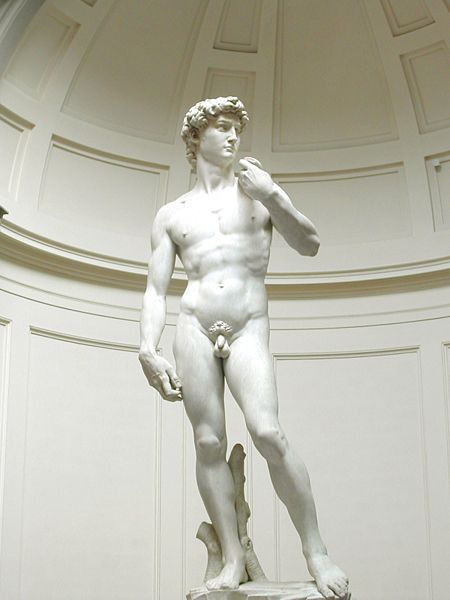
1504 – Michelangelo's David is unveiled in Florence.

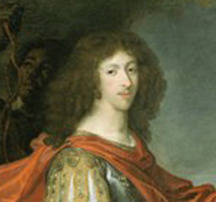
1621 – Louis II De Bourbon, Prince De Condé, French General, born; Known as "the Great Condé," this greatest of French generals was an intimate of Moliere, Racine, Boileau, and La Bruyère. He also had the misfortune to be acquainted with "Madame"—the gossipy wife of Philip, duc d'Orleans—who spread the word about Conde's amours with his own sex.
Condé, a clever gent, went to great pains to establish a reputation as a great womanizer, but between the sharp tonge of Madame and the word of the well-known courtesan, Ninon de Lenclos, who was in a position to know, Condé fooled no one with his boasts.


1975 – Gays In The Military: U.S. Air Force Tech Sergeant Leonard Matlovich, a decorated veteran of the Vietnam War, appears in his Air Force uniform on the cover of Time Magazine with the headline (printed in bold letters) "I Am A Homosexual." He is later given a general discharge. Matlovich, who received a purple heart and a bronze star, for bravery, was one of the first high profile members of the U.S. military to come out of the closet and challenge the ban on Gays serving. Matlovich is also famous for his statement, which is also the epitaph on his gravestone in Washington, DC's Congressional Cemetery, "When I was in the military they gave me a medal for killing two men and a discharge for loving one."

1958 – A California appellate court overturns the nuisance conviction of a theatre owner because of sex in the theatre.


2 notes
·
View notes
Note
C, D, X -- for the fandom thing :)
C - A pairing you have never liked and probably never will
Scott Summers/Jean Grey, Logan/Jean Grey, Loki/Grandmaster, Loki/Thor, Tony/Pepper, Steve/Peggy (the last two are newer dislikes but now that I've started disliking them, I just can't imagine liking them again).
D - A pairing you wish you liked but just can’t
Tony/Pepper.
X - 3 OTPs from 3 different fandoms
Emma Frost/Tony Stark/Loki
Philippe d'Orleans/Chevalier de Lorraine/Palatine (Versailles)
Marko/Paul/Dwayne (The Lost Boys)
Ask me: Fandom Edition.
2 notes
·
View notes
Text

Em nome da Excalibur, a Academia dos Legados recebe KIERA MORANA FACILIER e BORIS HENRI D'ORLEANS.
FCs ocupados: Zendaya e Regé-Jean Page.
Vagas ocupadas: 3º filho da família Facilier (troca de vaga entre players) e 1º filho da família D'Orleans.
Habilidades ocupadas: sensibilidade à morte e ilusão.
2 notes
·
View notes
Video
youtube
A Palermo si celebrano le nozze del conte di Parigi con Isabella d'Orleans Braganza
data: 04/1931
colore: b/n
sonoro: muto
codice filmato: A076603
Text translation:
In Palermo, it’s celebrated the marriage of the Count of Paris with Isabelle of Orléans-Braganza
0:04 Palermo. Marriage of of the Count of Paris with Isabelle of Orléans-Braganza. The Cathedral, where the marriage took place.
0:16 H.E. Cardinal Lavitrano, Archbishop of Palermo.
0:30 The august spouses and the guests (lit. it’s the followers) leave the archiepiscopal palace
1:27 After the wedding ceremony
3:04 At Villa d'Orléans
Since still in the 1930s, heirs of previous Royal French Houses (which included of course Henri, the Orléanist claimant) were still exiled, the couple couldn’t marry in France. They chose Palermo because Henri’s family owned a palace there.
Palazzo d'Orléans is an 18th-century estate, opposite to Palazzo dei Normanni, in the centre of Palermo. It had firstly belonged to the Sicilian branch of the Spanish Monroy family (Hernán Cortés’ family). It later was bought by rich merchant Francesco Olivieri.
Starting 1808, Olivieri rented it to exiled Prince Louis Philippe d'Orléans. The following year, on November 25th, the French Prince married Princess Maria Amalia di Borbone-Due Sicilie (herself exiled with her family from Naples due to the Napoleonic invasion) and bought the palace, which took the name of Palazzo d'Orléans. The couple’s first three children would be born in the Palace (Ferdinand Philippe, Louise and Marie) and the family would live in Palermo until 1814, when they were reached by the news of Napoleon’s fall. The Orléans then left Palermo headed for France, where Louis Philippe would rule as king from 1830 to 1848.
Palazzo d'Orléans, in the meantime, still belonged to the French royal family. In 1855 Maria Amalia bestowed it to his son Henri, Duke of Aumale, whom expanded the estate up to 63 hectares, buying the adjoining houses and lands. A botanic and agricolture enthusiast, the Prince developed an innovative irrigation method. At Henri’s death, in 1897, the Palace was inherited by his great-nephew, Louis Philippe Robert (grandson of Henri’s eldest brother, Ferdinand Philippe). Louis Philippe would order the last enlargement of the Palace, but also rent a large part of the adjacent land to support his exiled life
After the childless Prince’s death in Palermo, in 1926, Palazzo d'Orléans would be inherited by his eldest sister, Amélie, last Queen consort of Portugal, whom would sell it to her cousin, Jean, Duke of Guise. On February 10th, 1929, the Palace hosted the marriage of the Duke’s daughter, Françoise, to Prince Christóphoros of Greece and Denmark. Two years later, on April 8th was celebrated the marriage captured by this video. Wedding witness were: Don Carlos of Bourbon-Two Sicilies (maternal cousin of the groom), Prince Amedeo d’Aosta, Duke of Apulia (the groom’s brother-in-law), Prince Pedro Gastão of Orléans-Braganza (the bride’s brother), and Prince Adam Ludwik Czartoryski (grandson of Prince Louis of Orléans, Duke of Nemours).
In 1940, following Fascist Italy’s entering in the war against France (and the rest of the Allied Forces) Palazzo d'Orléans was confiscated and entrusted to the Banco di Sicilia. In 1943, after the Allied invasion of Sicily, the Palace was used by the US army as military headquarters (and it is in this occasion that the Palace was looted of many precious objects, like art pieces, furniture and silverware).
After the war, the building was elected as seat of the Regione Siciliana, despite still officially belonging to the Orléans. In 1950 the descendants sold circa 40 hectares of land to realise the University campus. Finally, in 1955 they sold the Palace to the Region, which still uses it as its headquartes.
The wonderful park which ornated the back of the Palace was slowly transormed into a giardino all’italiana, and was converted into Italy’s only ornithological park. Of the original park, only the ficus magnoloides planted by Louis Philippe remains.
Sources
I Giardini del Palazzo Orléans
Il Palazzo d’Orléans a Palermo
Palais d’Orléans
#history#historicwomendaily#women#Palermo#house of orléans#Isabelle of Orléans-Braganza#Henri of Orléans#Villa d'Orléans#contemporary sicily#province of palermo#video#people of sicily
0 notes
Photo

Louise Henriette de Bourbon (1726–1759), depicted as the goddess Hebe by Nattier.
She was the only daughter of Louis Armand de Bourbon, Prince of Conti and Louise Élisabeth de Bourbon.
Her mother was the oldest and favourite daughter of Louise-Françoise de Bourbon, herself the oldest of the surviving legitimised daughters of Louis XIV and Madame de Montespan. As a member of the reigning House of Bourbon, Louise Henriette was a Princess of the Blood (princesse du sang). In her youth she was known at court as Mademoiselle de Conti.
#jean marc nattier#royaume de france#maison de bourbon#bourbon orleans#maison d'orléans#maison d'orleans#bourbon conti#mademoiselle de conti#princesse du sang
43 notes
·
View notes
Photo

Jean-Marc Nattier (French, 1685-1766)
Portrait dit de Louise-Henriette de Bourbon-Conti, duchesse d'Orléans, en Hébé, 1732
#public domain#art#fine art#jean marc nattier#real painting without over-exposure#french#france#europe#european#brunette#female portrait#black eyes#louise hentiette de bournon conti#duchesse d'orleans#hebe#greek mythology#mediterranean#oil painting#western civilization#european history#noble#nobility#best quality
21 notes
·
View notes
Photo
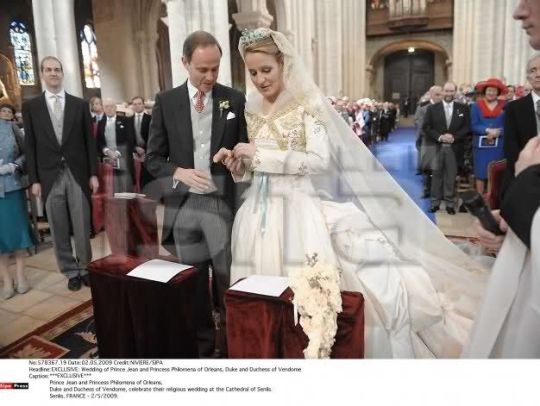
✵ May 2, 2009 ✵
Maria Philomena de Tornos Steinhart & Prince Jean d'Orléans, Duke of Vendôme
Now Count and Countess of Paris
#Philomena de Tornos Steinhart#prince jean#jean d'orleans#prince jean d'orleans#Duke of Vendôme#Duchess of Vendôme#count of paris#house of paris#countess of paris#wedding dress#royal wedding dress#wedding veil#royal wedding veil#lace wedding dress#lace wedding gown#wedding bouquet#royal wedding bouquet#embroidered wedding dress#wedding dress train#royal wedding train#royal wedding dress train#turquoise jewelry#turquoise tiara#Diamond Jewelry#Diamond Tiara#gold tiara#gold jewelry#france#french royalty#french royal family
9 notes
·
View notes
Photo

THE FAMILY
T.R.H. Prince Jacques d'Orleans, Duke of Orleans; Princess Helene d'Orleans, Countess of Limburg-Stirum; Prince Henri d'Orleans, Count of Paris; and Prince Jean d'Orleans, Duke of Vendôme
#the family#prince henri d'orleans#count of paris#prince jean d'orleans#duke of vêndome#prince jacques d'orleans#duke of orleans#princess helene d'orleans#countess of limburg-stirum#princess beatrice d'orleans#france#french royalty#royal#royals#royalty#royaltyedit
4 notes
·
View notes